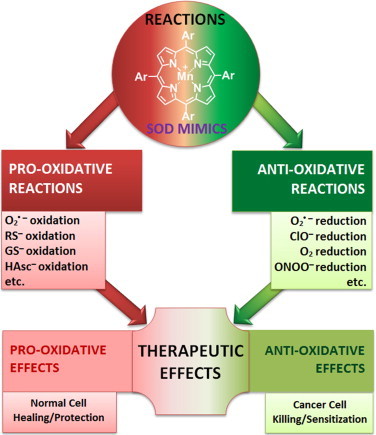Scheme XXVI.

MnPs undergo anti- and pro-oxidative reactions which may be demonstrated either as anti- or pro-oxidative therapeutic effects. While such reasoning and experimental data behind it have been a main theme across this review, it is important to stress it here again: researchers need to differentiate between the type of reactions of MnPs and nature of therapeutic effects they observe. For example, oxidation of cysteines of NF-kB by MnP suppresses its activation which in turn suppresses secondary oxidative stress. This is demonstrated as reduced inflammation – commonly accepted as anti-oxidative therapeutic effects. Further, the oxidation of cysteine of Keap1 by MnP would activate Nrf2 which would upregulate endogenous antioxidative defenses (catalases, SODs, peroxidases, etc) in an adaptive response. This would result in suppression of inflammation –clear case of antioxidative effect. Again pro-oxidative reaction of MnP results in anti-oxidative therapeutic effects. Please note that not all reactions thus far studied are listed in this Scheme, such as reactions with tetrahydrobiopterin, H2O2 and CO3•− (for further information see other chapters). Many more in vivo reactions of MnPs are likely yet to be identified.
